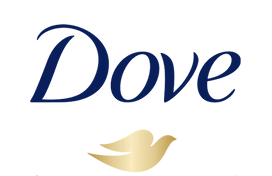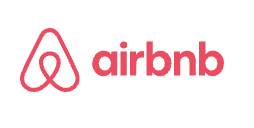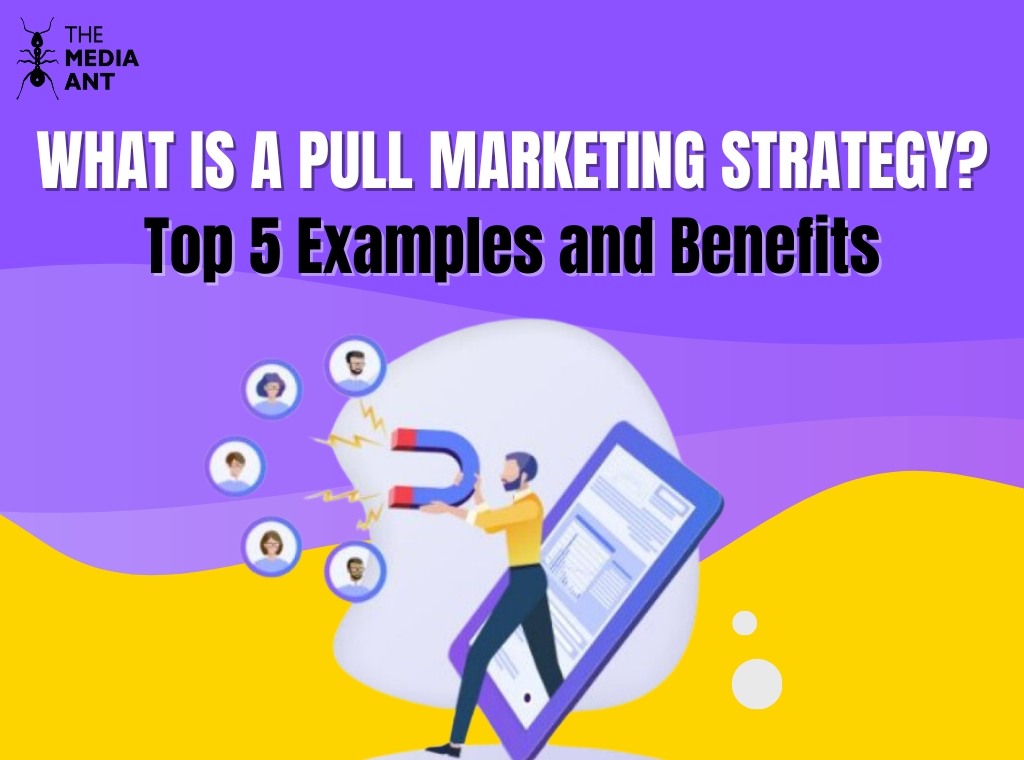In the dynamic landscape of marketing strategies, businesses are constantly seeking innovative approaches to attract and engage their target audiences. One such strategy that has gained significant traction is the Pull Marketing strategy. Pull Marketing revolves around enticing potential customers to seek out a brand or product, rather than aggressively pushing the brand onto consumers. In this article, we will delve into what exactly constitutes a Pull Marketing strategy, explore five compelling examples, and elucidate the manifold benefits it offers to businesses aiming to foster authentic connections with their clientele.
What is a Pull Marketing strategy?
A Pull Marketing strategy is an approach in marketing where businesses aim to attract and draw customers towards their products or services by creating compelling content, offering valuable information, and building brand awareness. Unlike traditional advertising methods that push messages onto consumers through interruptive channels, Pull Marketing focuses on generating interest and curiosity among potential customers, prompting them to seek out the brand or product themselves.
At its core, Pull Marketing revolves around understanding and addressing the needs and preferences of the target audience. By providing relevant and engaging content through various channels such as social media, search engines, blogs, and other digital platforms, businesses can establish themselves as authoritative sources in their respective industries. This approach not only helps in building trust and credibility but also encourages customer loyalty and advocacy.
Key components of a Pull Marketing strategy
1. Content Marketing
Creating high-quality and relevant content that addresses the needs, interests, and pain points of the target audience. This content can take various forms such as blog posts, articles, videos, infographics, podcasts, and more. The goal is to provide valuable information that attracts potential customers and positions the brand as a trusted resource in its industry.
2. Search Engine Optimization (SEO)
Optimizing digital content to improve its visibility and ranking in search engine results pages (SERPs). This involves keyword research, on-page optimization, technical SEO, and link building strategies to ensure that the brand’s content is easily discoverable by users searching for related topics or products/services.
3. Social Media Marketing
Leveraging social media platforms to engage with the target audience, share valuable content, build relationships, and foster brand awareness. This includes creating compelling social media posts, interacting with followers, running targeted ads, and utilizing analytics to track performance and refine strategies.
4. Influencer Collaborations
Partnering with influencers or thought leaders in the industry who have a significant following and influence over the target audience. By collaborating with these individuals, brands can leverage their credibility and reach to amplify their message and attract new customers.
5. Exceptional Customer Experiences
Providing exceptional customer service and experiences at every touchpoint of the customer journey. This involves delivering personalized interactions, addressing customer inquiries and concerns promptly, and continuously striving to exceed expectations to build long-term relationships and foster customer loyalty.
Benefits of using Pull Marketing Strategy
Implementing a Pull Marketing strategy offers several compelling benefits for businesses:
1. Higher Quality Leads
Pull Marketing attracts potential customers who are already interested in the brand or its products/services. By providing valuable content and information, businesses can attract leads that are more likely to convert into paying customers, resulting in higher quality leads and improved conversion rates.
2. Increased Brand Visibility and Awareness
Through consistent and engaging content creation, social media engagement, and search engine optimization efforts, Pull Marketing helps boost brand visibility and awareness. By positioning the brand as a trusted resource and authority in its industry, businesses can attract attention from a wider audience and establish a strong brand presence.
3. Enhanced Customer Engagement
Pull Marketing encourages two-way communication between businesses and customers. By creating valuable content, interacting with followers on social media, and responding to customer inquiries and feedback, businesses can foster meaningful relationships with their audience, leading to increased engagement, loyalty, and advocacy.
4. Cost-Effectiveness
Compared to traditional outbound marketing tactics such as print ads or TV commercials, Pull Marketing strategies often require lower upfront costs. Content creation, social media engagement, and search engine optimization efforts can be relatively inexpensive compared to traditional advertising methods, making Pull Marketing a cost-effective approach for businesses of all sizes.
5. Long-Term Sustainability
Pull Marketing focuses on building relationships and trust with customers over time, rather than relying on one-time transactions. By consistently providing value and engaging with the audience, businesses can create a loyal customer base that continues to support the brand and contribute to its long-term success.
6. Improved Return on Investment (ROI)
Pull Marketing strategies typically yield a higher return on investment compared to traditional outbound marketing tactics. By targeting interested and engaged leads, businesses can achieve better conversion rates and customer retention, ultimately leading to a higher ROI on their marketing efforts.
Top 5 Examples of Pull Marketing Strategy
Here are some well-known brands and their successful pull marketing campaigns:
1. Red Bull

Red Bull is a prime example of a brand that excels in Pull Marketing through content creation and event sponsorship. Red Bull’s content marketing efforts include producing high-energy videos showcasing extreme sports and adventure activities, which resonate with its target audience of young, adventurous individuals. By sponsoring events like the Red Bull Air Race and Red Bull Rampage, the brand further reinforces its image as a lifestyle brand synonymous with excitement and adrenaline.
2. HubSpot

HubSpot, a leading provider of inbound marketing and sales software, implements a Pull Marketing strategy centered around educational content and thought leadership. Through its extensive library of blog posts, eBooks, webinars, and online courses, HubSpot offers valuable resources on topics related to marketing, sales, and customer service. By providing actionable insights and practical tips, HubSpot attracts potential customers who are seeking solutions to their marketing challenges, ultimately driving leads and sales for its software products.
3. Dove

Dove has successfully implemented a Pull Marketing strategy by focusing on authenticity and inclusivity in its advertising campaigns. Dove’s “Real Beauty” campaign, for example, challenges conventional beauty standards by featuring real women of diverse body types, ages, and ethnicities in its advertisements. By celebrating and empowering women of all shapes and sizes, Dove resonates with its target audience and builds a loyal following who appreciates its commitment to promoting self-confidence and body positivity.
4. Tesla

Tesla employs a Pull Marketing strategy by leveraging its innovative products, word-of-mouth marketing, and a strong online presence to attract customers. Tesla’s electric vehicles (EVs) have garnered widespread attention for their cutting-edge technology, performance, and environmental sustainability. Through social media, customer testimonials, and viral marketing campaigns, Tesla generates buzz and excitement around its brand, prompting potential customers to seek out more information and ultimately make a purchase.
5. Airbnb

Airbnb utilizes a Pull Marketing strategy by leveraging user-generated content, peer recommendations, and personalized experiences to attract travelers. Through its platform, Airbnb allows hosts to create unique listings and share their stories, photos, and reviews, which help travelers make informed decisions when booking accommodations. By fostering a sense of community and trust among users, Airbnb has built a strong brand presence and established itself as a leading platform for alternative travel accommodations.
Difference between Push and Pull Strategy in Marketing
1. Approach to Distribution
Push strategy involves pushing products through distribution channels to retailers, while pull strategy focuses on creating consumer demand that pulls products through the distribution channels.
2. Target Audience
Push strategy primarily targets intermediaries such as wholesalers and retailers, incentivizing them to stock and sell the product. In contrast, pull strategy targets end consumers directly, aiming to create brand awareness and demand.
3. Marketing Tactics
Push strategy relies heavily on sales tactics, trade promotions, and personal selling to convince intermediaries to carry the product. Pull strategy employs advertising, branding, and consumer-focused promotions to attract consumers and stimulate demand.
4. Control Over Demand
With push strategy, the marketer has more control over product availability and distribution. In pull strategy, demand is generated from consumers, allowing for more organic growth but requiring effective branding and consumer engagement.
Disadvantages of Pull Marketing strategy
1. Longer Time to Generate Results
Pull marketing strategies often require time to build momentum and attract an audience. Unlike push marketing tactics that can yield more immediate results, such as targeted advertising, pull marketing efforts like content creation and SEO may take time to gain traction and produce measurable outcomes.
2. High Initial Investment
Pull marketing initiatives typically necessitate a significant upfront investment in content creation, SEO optimization, and other inbound marketing activities. This can be financially burdensome, especially for small businesses with limited resources, and the returns may not be immediately apparent.
3. Dependence on Audience Proactivity
Pull marketing relies on consumers actively seeking out information or solutions related to a product or service. If the target audience is not actively engaged in searching for such content, the effectiveness of pull marketing efforts may be limited, leading to lower visibility and engagement.
4. Difficulty in Measuring ROI
Unlike some forms of push marketing, such as pay-per-click advertising, which offer clear metrics for measuring return on investment (ROI), pull marketing ROI can be more challenging to quantify. Tracking the impact of content marketing, social media engagement, and other pull tactics on sales and revenue often requires sophisticated analytics tools and attribution modeling.
5. Intense Competition for Attention
With the proliferation of online content and the increasing competitiveness of digital channels, standing out in a crowded marketplace can be challenging for pull marketing strategies. Brands must compete for the attention of consumers inundated with information, making it difficult to cut through the noise and capture their interest organically.
Conclusion
In conclusion, the Pull Marketing strategy stands as a testament to the evolving nature of marketing methodologies, prioritizing consumer empowerment and engagement over intrusive tactics. Through the exploration of diverse examples ranging from content marketing to influencer collaborations, it becomes evident that businesses across various industries have harnessed the power of Pull Marketing to establish enduring relationships with their target demographics. As brands continue to navigate the ever-changing marketing landscape, integrating Pull Marketing principles can undoubtedly enhance brand visibility, foster customer loyalty, and drive sustainable growth in an increasingly competitive marketplace.
FAQs of Pull Marketing Strategy
1. How does pull marketing differ from push marketing?
Pull marketing involves attracting customers to a product or service through tactics that make the brand more visible and desirable, such as content marketing, SEO, and social media engagement. In contrast, push marketing involves proactively pushing products or services onto customers through strategies like advertising, direct sales, and promotions. Pull marketing relies on drawing customers in, while push marketing pushes products out to the audience.
2. Which brand uses pull strategy?
One example of a brand that uses a pull strategy is Apple. Through innovative product design, strong brand identity, and effective marketing campaigns, Apple creates a desire for its products, attracting customers to seek out and purchase its devices.
3. Is pull marketing suitable for all businesses?
Pull marketing may not be suitable for all businesses, particularly those with low brand awareness or niche markets. However, for brands with strong value propositions, broad appeal, and resources for content creation and distribution, pull marketing can be highly effective.
4. How can I measure the effectiveness of pull marketing efforts?
Effectiveness of pull marketing efforts can be measured through metrics such as website traffic, social media engagement, content consumption, lead generation, conversion rates, and customer feedback. Tracking these indicators provides insights into the impact of pull marketing strategies on audience attraction and retention.
5. Is Coca Cola a push or pull strategy?
Coca-Cola primarily utilizes a push strategy, actively promoting its products through extensive advertising, sponsorships, and distribution networks. However, it also incorporates elements of pull marketing through brand building and consumer engagement initiatives to create demand.
6. Is Amazon a push or pull strategy?
Amazon predominantly employs a pull strategy by creating a user-friendly platform, personalized recommendations, and customer reviews to attract shoppers. However, it also utilizes push elements through targeted advertising, promotions, and email marketing to drive sales and increase product visibility.





